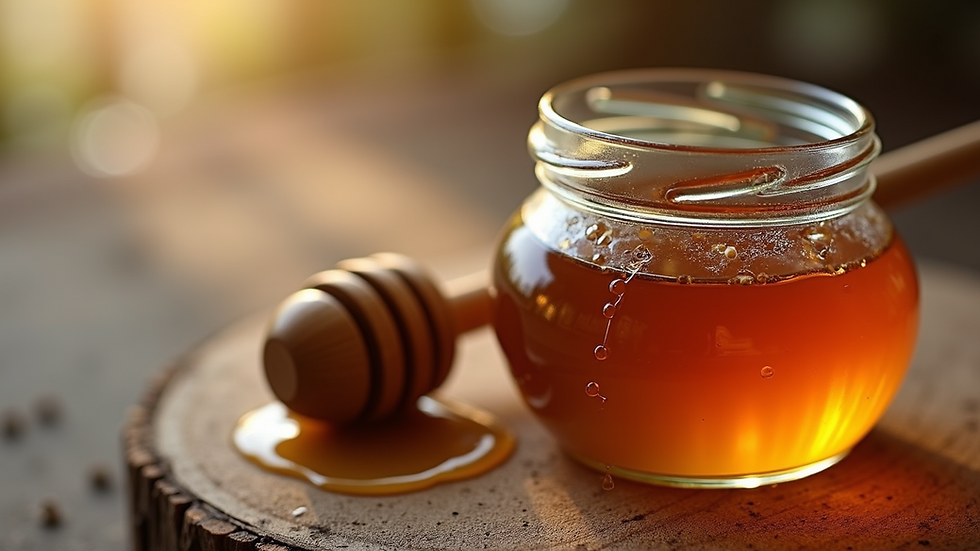Exploring the Basics of Beekeeping for Beginners
- smokeumfish2002
- Jun 6
- 5 min read
Beekeeping is a fascinating and rewarding hobby that provides the opportunity to connect with nature while helping local ecosystems thrive. For beginners, it may seem overwhelming, but understanding the basics can pave the way for a successful beekeeping journey. In this post, we will explore the essential elements of beekeeping, helping you gain confidence and knowledge as you start your adventure.
Beekeeping Basics
Understanding the fundamentals of beekeeping is key to becoming a successful beekeeper. Before you dive into the world of bees, it's essential to learn about their behavior, the different types of bees in a hive, and the equipment needed.
A typical honeybee colony consists of three types of bees: the queen, workers, and drones. The queen is the colony's leader, responsible for laying eggs and ensuring the hive's population remains healthy. Worker bees, which make up the majority of the hive, perform various tasks such as foraging for nectar and pollen, cleaning the hive, and tending to the queen and larvae. Drones, the male bees, have the sole purpose of mating with a queen from another hive.
To get started, familiarize yourself with basic beekeeping terminology. Understanding terms like "hive," "supers," "foundation," and "smoker" will make learning more comfortable. Additionally, you should begin researching local laws and regulations related to beekeeping in your area.

Essential Beekeeping Equipment
Once you understand the basics, it's time to gather the necessary equipment. The right tools will make your beekeeping experience more enjoyable and safer.
One of the most essential pieces of equipment is the beehive itself. There are several types of hives, such as Langstroth, Top-Bar, and Warre hives. The Langstroth hive is the most common choice among beekeepers. It consists of stacked boxes called supers where bees create honeycomb and store honey.
In addition to a hive, you'll need protective gear, including a beekeeping suit, gloves, and a veil. These items will keep you safe from bee stings while you work with your bees. A smoker is another crucial tool that helps calm the bees during hive inspections. The smoke masks the bees' alarm pheromones, preventing aggressive behavior.
Other useful equipment includes a hive tool for prying apart boxes and scraping off excess wax and honey, as well as a bee brush to gently move bees without harming them. Investing in quality tools and equipment will not only make your job easier but also provide a better experience for your bees.

Choosing the Right Bees
Selecting the right bee species is important for a successful beekeeping experience. Different bee species have distinct traits, making some better suited for specific climates or purposes than others.
The most common honeybee species for beekeeping is the Apis mellifera, or the Western honeybee. They are known for their docile nature, high honey production, and ability to adapt to various environments. Within this species, there are different strains, such as Italian, Carniolan, and Russian bees. Research and consider which strain aligns with your goals and local climate.
You can purchase bees from various sources, including local beekeepers, bee suppliers, or organizations specializing in breeding. When starting, beginners often opt for either packaged bees, which come in a box with a queen, or established nucleus colonies (nucs), which are smaller hives that contain a queen, workers, and brood.
Starting with a healthy bee colony is crucial for your success. Request health certifications to ensure your bees are disease-free and ready for their new home in your hive.

Hive Management Techniques
Once you have your bees and hive set up, ongoing management will determine the health and productivity of your colony. Regular inspections are essential to monitor the bees' well-being, check for diseases, and assess honey production.
It is recommended to inspect your hive every 7 to 14 days during the active season. During inspections, look for signs of troubled bees, such as unusual behavior or a decrease in activity. Take note of the honey and nectar stores, brood patterns, and presence of any pests like varroa mites. Early detection of issues will help you address problems before they escalate.
Another critical aspect of hive management is swarming. Swarming occurs when a colony becomes too crowded and a portion of it leaves in search of a new home. While swarming is a natural process, it can result in a significant loss of bees. To prevent swarming, ensure your hive has enough space for the queen to lay eggs and for the workers to store honey. Regularly adding supers or splitting the colony can help control this.
Additionally, connecting with local beekeeping communities, such as the honey badger bee farm, can provide invaluable advice and support. Engaging with experienced beekeepers will help you navigate challenges and celebrate successes in your beekeeping journey.
Harvesting Honey
One of the most rewarding aspects of beekeeping is harvesting honey. After your bees have established themselves and have stored enough honey, it's time to reap the sweet rewards. The harvesting process typically occurs during the late summer or early fall.
Before harvesting, ensure that you leave enough honey for the bees to survive the winter. Generally, it's recommended to leave at least 60 to 70 pounds of honey in the hive. When you're ready to harvest, carefully remove the supers filled with capped honeycomb.
You can extract honey using a honey extractor, which spins the frames to force honey out, or you can crush and strain the comb. Regardless of the method, always practice cleanliness to maintain the honey's quality.
Once extracted, your honey can be bottled and shared with family and friends or sold. The joy of harvesting honey is a fulfilling part of the beekeeping experience.
Embracing the Beekeeping Community
Beekeeping is more than just a hobby—it's a passion that connects you with nature and the environment. Joining a beekeeping association or participating in local meet-ups can significantly enhance your experience. These communities are not just great for sharing knowledge, but they also foster friendships and support.
Many beekeeping groups offer workshops, mentorship programs, and exciting events that help you improve your skills. Local beekeepers can provide insights on managing hives specific to your region. Plus, you'll have the opportunity to network with experienced beekeepers who can guide you through challenges.
Don’t hesitate to reach out and ask questions. A thriving beekeeping community is ready to welcome newcomers and share their wisdom.
As you embark on your beekeeping journey, remember that patience is key. Like any endeavor, beekeeping comes with its challenges, but the rewards are profound. Whether you’re a hobbyist seeking honey or looking to contribute to local biodiversity, understanding the basics is your first step.
Happy beekeeping!








Comments